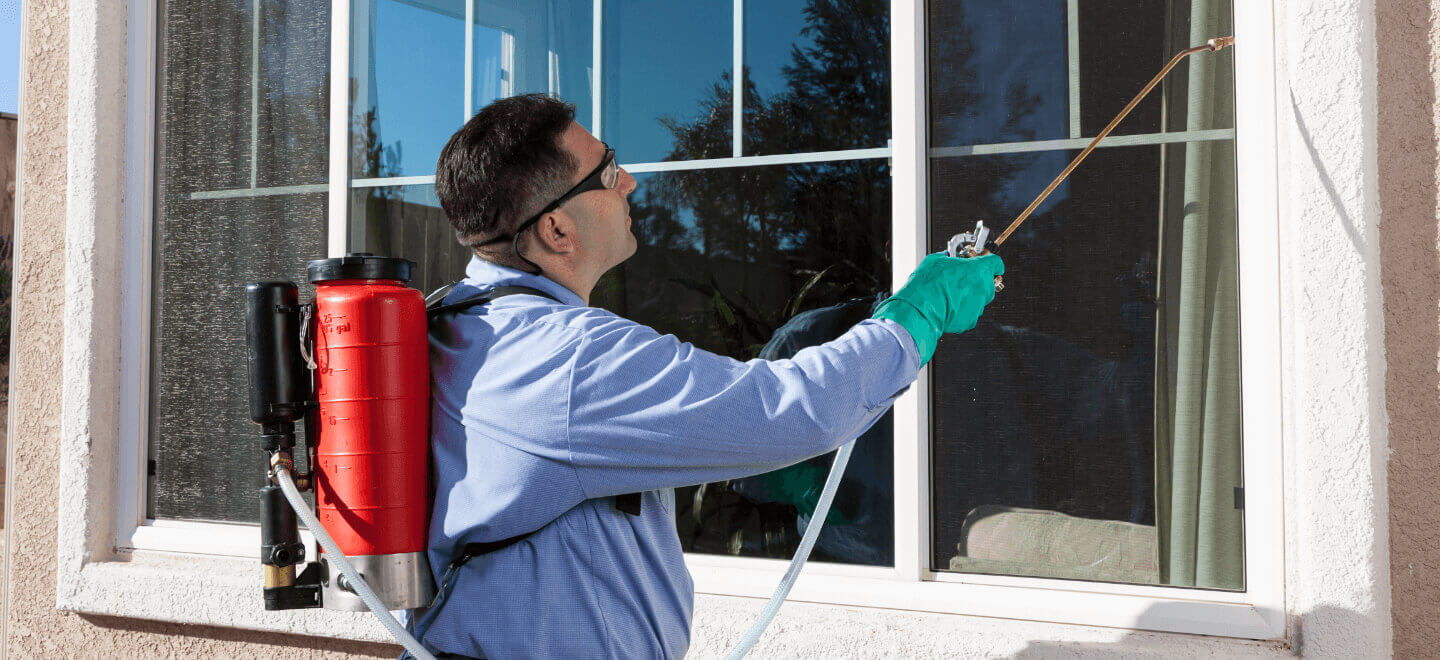A1 Charlotte Pest Control Companies - Your Neighborhood Pest Professionals
A1 Charlotte Pest Control Companies - Your Neighborhood Pest Professionals
Blog Article
Bed Pest Therapy Failure: Contrasting Chemical Vs. Non-Chemical Solutions
In the world of insect control, especially when managing the persistent concern of bed insects, the selection in between chemical and non-chemical therapy solutions can be an essential one. Both strategies offer distinct benefits and disadvantages, affecting aspects such as efficiency, safety factors to consider, and overall expense. By analyzing the nuanced details of each technique, a clearer understanding of which course to seek in attending to a bed pest problem can be acquired.
Performance of Chemical Treatments
Chemical therapies for bed bug problems have been widely identified for their quick and potent efficacy in eradicating these pests. When thinking about the effectiveness of chemical therapies, it is essential to understand that they can provide a comprehensive and quick solution to a bed pest trouble. Professional pest control experts often rely upon insecticides to target bed pests at various phases of their life process, consisting of eggs, adults, and fairies. These chemicals normally function by interrupting the bed pests' anxious system, resulting in paralysis and ultimate fatality.
Moreover, chemical therapies have the advantage of using residual impacts, implying that they can proceed to eliminate bed bugs also after the initial application. This residual action is specifically helpful in combating any potential re-infestations. Furthermore, the quick action of chemical therapies can bring alleviation to individuals encountering severe bed pest invasions, permitting them to gain back control of their space swiftly.
Security Interest In Chemical Solutions
When making use of chemical remedies for bed bug therapy is guaranteeing the safety of occupants and the atmosphere,One critical element that needs careful consideration. While chemical therapies can be reliable in removing bed insects, they may pose threats otherwise handled properly. One of the main safety and security interest in chemical options is the potential injury they can trigger to human health and wellness. Direct exposure to particular chemicals made use of in bed bug treatments can lead to respiratory concerns, skin irritability, or various other negative responses, particularly in people with pre-existing problems or level of sensitivities. Furthermore, incorrect application or dose of chemical pesticides can lead to toxic deposits remaining in the cured area, posing lasting health and wellness risks to passengers.
Furthermore, the ecological impact of chemical services is an additional significant factor to consider. Some pesticides utilized in bed insect therapies may be dangerous to advantageous pests, wild animals, and environments if they seep into the dirt or water systems. It is important to make use of chemical therapies deliberately, adhering to safety guidelines, and considering much less harmful options to alleviate these risks and guarantee the risk-free and effective monitoring of bed insect infestations.
Advantages of Non-Chemical Approaches
Taking into consideration the prospective security concerns and environmental effect associated with chemical services for bed bug treatment, exploring non-chemical techniques provides an encouraging choice with numerous distinct benefits. Non-chemical techniques provide a more secure option for households, particularly those with kids, individuals, or pets conscious rough chemicals. These strategies remove the threats of direct exposure to hazardous compounds, decreasing the potential for negative wellness effects. Furthermore, non-chemical therapies are eco-friendly, as they do not add to air or water air pollution, making them a lasting choice for parasite control.
In addition, non-chemical services can be efficient in targeting bed bugs, including hard-to-reach areas where chemical treatments may not penetrate. Techniques such as heat treatment, vacuuming, vapor cleansing, and mattress encasements provide complete obliteration without making use of harmful chemicals. Furthermore, non-chemical techniques can be less turbulent, requiring marginal preparation and enabling for quicker reentry right into dealt with areas. Generally, selecting non-chemical bed pest treatment approaches not only focuses on security and environmental management but likewise guarantees extensive and effective bug control.
Limitations of Non-Chemical Treatments

Additionally, non-chemical treatments usually need several applications to attain successful obliteration. This can be time-consuming and might not always ensure complete removal visit the site of all bed insects and their eggs, particularly in hard-to-reach or concealed areas.
In addition, the success of non-chemical therapies greatly relies on appropriate implementation and thoroughness, which can be testing for individuals without specialist proficiency. Insufficient application of non-chemical approaches may result in incomplete eradication, causing consistent infestations and the need for added therapies.
As a result, while non-chemical therapies have their advantages, it is necessary to acknowledge these limitations and consider them when figuring out one of the most efficient strategy for managing bed insect invasions.
Expense Contrast: Chemical Vs. Non-Chemical Options
Given the limitations linked with non-chemical therapies, an important facet to examine in the context of bed bug monitoring is the price comparison in between chemical and non-chemical choices. In comparison, non-chemical treatments like warm therapy or vapor can be more expensive, with expenses varying from $1,000 to $6,000 for a whole home. While the first cost of chemical treatments may appear reduced, numerous treatments might be needed to fully eliminate the infestation, possibly enhancing the overall cost.
Conclusion

Taking into consideration the prospective security issues and ecological influence linked with chemical remedies for bed insect treatment, discovering non-chemical approaches provides an appealing option with numerous distinctive advantages.Given the limitations connected with non-chemical therapies, a vital aspect to evaluate in the context of bed pest administration is the expense comparison in between chemical and non-chemical choices. In contrast, non-chemical treatments like warm treatment or steam can be a lot more pricey, with prices ranging from $1,000 to $6,000 for an visite site entire home. While the first cost of chemical treatments may seem lower, several therapies may be called for to totally eliminate the invasion, potentially enhancing the overall expense.In final thought, when comparing chemical and non-chemical bed pest treatment options, it is vital to think about effectiveness, safety, advantages, constraints, and price.
Report this page